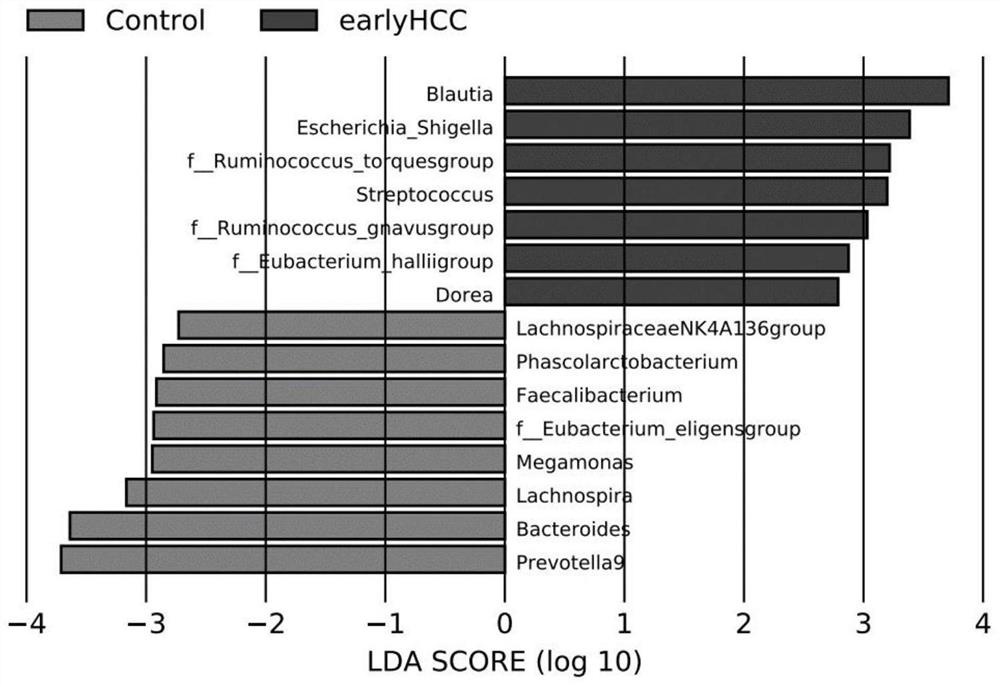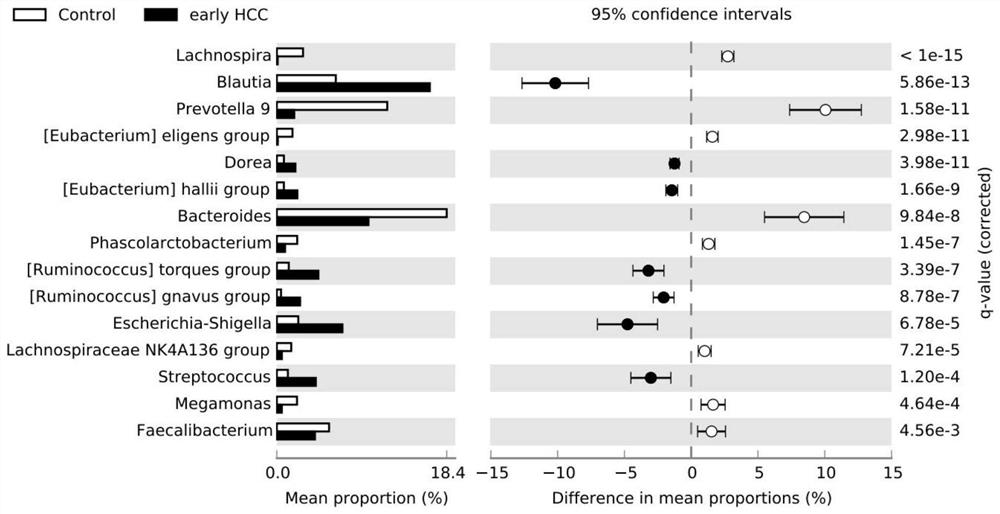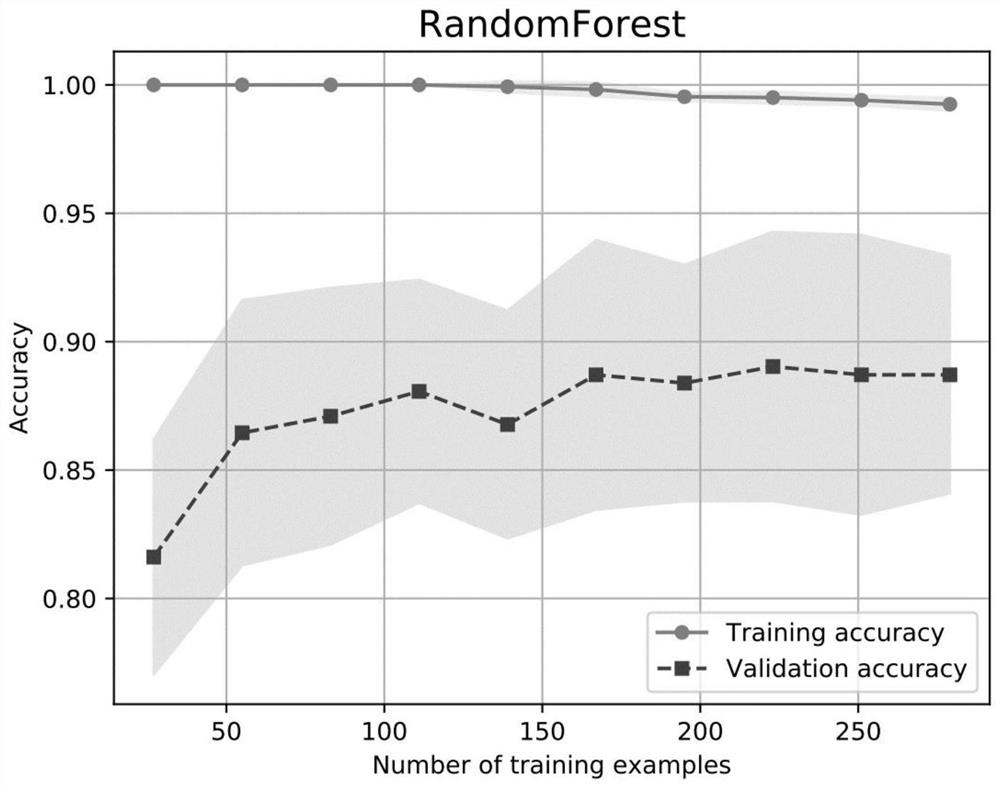Biomarker for early diagnosis of primary hepatocellular carcinoma as well as detection reagent and application of biomarker
A biomarker and hepatocellular carcinoma technology, applied in the field of biomarkers and detection reagents for the early diagnosis of primary hepatocellular carcinoma, can solve the problem of low diagnostic specificity of alpha-fetoprotein, delay in treatment timing, and elevated levels of alpha-fetoprotein question
- Summary
- Abstract
- Description
- Claims
- Application Information
AI Technical Summary
Problems solved by technology
Method used
Image
Examples
Embodiment 1
[0062] Screening of intestinal biomarkers for early liver cancer
[0063] 1. DNA extraction of intestinal bacteria
[0064] Stool samples from 141 patients with early-stage liver cancer and 194 stool samples from healthy people were collected from Guangxi to screen for early-stage liver cancer intestinal biomarkers. The specific steps are as follows:
[0065] 1: Aliquot the above stool samples and freeze them at -80°C;
[0066] 2: Extract the DNA of fecal bacteria from liver cancer patients and healthy people mentioned in S1;
[0067] 3: Perform 16S rRNA amplification and library construction on fecal bacterial DNA, the specific steps are as follows:
[0068] S1. Nucleic acid extraction (Surbiopure Fecal Nucleic Acid Extraction Kit (magnetic bead method), Guangzhou Surbiopure Biotechnology Co., Ltd.).
[0069] S2. Take 0.25g of feces sample (set a blank control and MOCK control at the same time) and add it to the Dry beads Tube, add 900μl S1-Lysis Enhancer, vortex thoroughl...
Embodiment 2
[0091] The ability of a predictive model using biomarkers to distinguish early-stage liver cancer patients from healthy controls
[0092] It is expected to establish a random forest model that can specifically identify early liver cancer and healthy population samples through the 15 intestinal biomarkers found above. The feces of 113 cases of early liver cancer and 155 cases of healthy controls were collected, and the same processing method as in Example 1 was adopted, and the grid search method was used to adjust the model training parameters and ten times of cross-validation were performed on the 15 intestinal organisms of the 268 cases of feces. Marker training random forest model, specifically setting random forest model parameter gradient n_estimators=[100,500,1000]; max_depth=[1,2,3,7,9]; max_features=["log2","sqrt"]. Use the python software sklearn.model_selection.GridSearchCV module to search for the best parameters, a total of 3*5*2=30 parameter combinations, each par...
Embodiment 3
[0106] Evaluating the diagnostic ability of biomarkers to establish a predictive model for early-stage liver cancer patients and healthy controls
[0107]The isolation set data (including 28 early-stage liver cancer patients and 39 healthy people) separated from model training was used to verify the accuracy of the trained random forest model for early diagnosis of liver cancer. Using the same processing method as in Example 1, it is to be verified that the screened biomarkers and the trained random forest model can be used for early diagnosis of liver cancer.
[0108] Results: The results of the confusion matrix are shown in Table 5. The regression result of the test has a precision of 0.97, a recall rate of 1.0, and a specificity of 0.98. It can be seen that the biomarker, random forest training model and detection method of the present invention can be used for early diagnosis of liver cancer.
PUM
 Login to View More
Login to View More Abstract
Description
Claims
Application Information
 Login to View More
Login to View More - R&D
- Intellectual Property
- Life Sciences
- Materials
- Tech Scout
- Unparalleled Data Quality
- Higher Quality Content
- 60% Fewer Hallucinations
Browse by: Latest US Patents, China's latest patents, Technical Efficacy Thesaurus, Application Domain, Technology Topic, Popular Technical Reports.
© 2025 PatSnap. All rights reserved.Legal|Privacy policy|Modern Slavery Act Transparency Statement|Sitemap|About US| Contact US: help@patsnap.com



